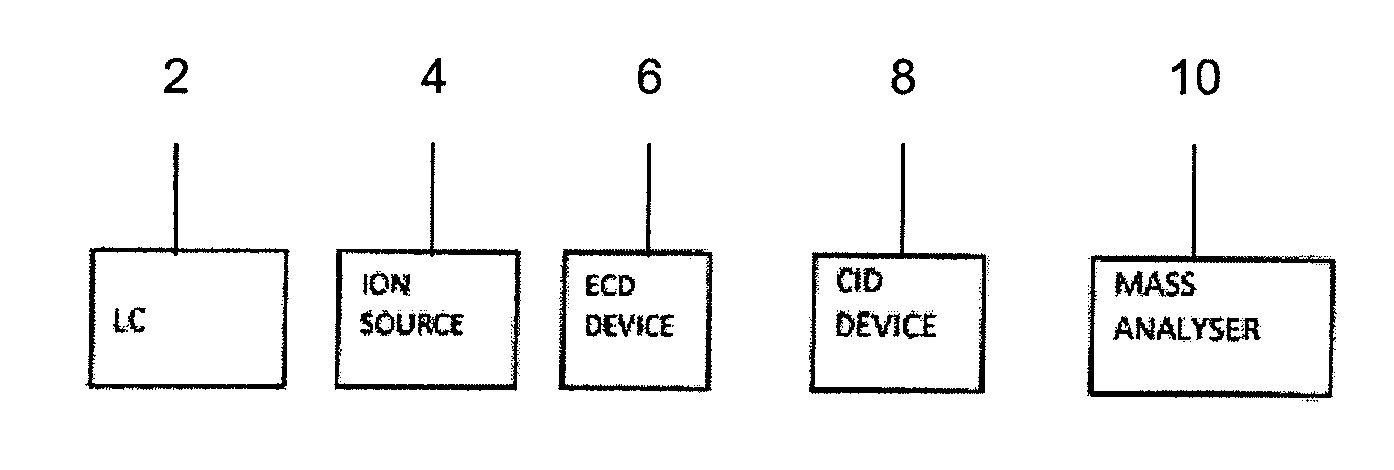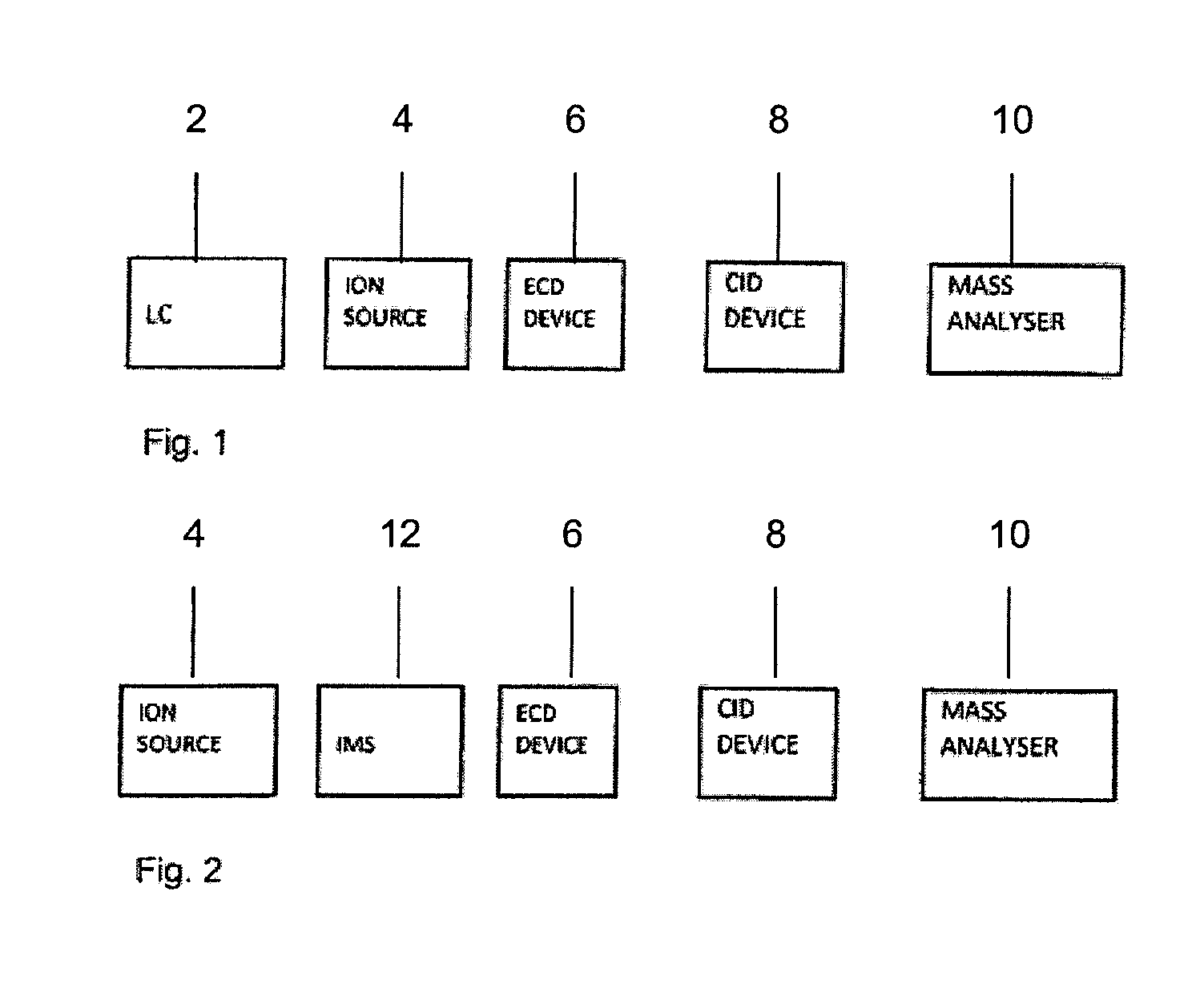Method of MS/MS Mass Spectrometry
a mass spectrometry and mass spectrometry technology, applied in the field of mass spectrometry, can solve the problems of inability to use ion selection techniques, difficult to associate parent ions with their fragment ions, and no known method of associating fragment ions with their precursor ions, etc., to improve the analytical utility of atmospheric pressure
- Summary
- Abstract
- Description
- Claims
- Application Information
AI Technical Summary
Benefits of technology
Problems solved by technology
Method used
Image
Examples
Embodiment Construction
[0122]FIG. 1 shows a schematic of a preferred embodiment in which parent ions and their fragment ions are essentially associated based on their liquid chromatography elution times. The basic components of this embodiment comprise a liquid chromatography device 2, an ion source 4, an ECD device 6, a CID device 8 and a mass analyser 10.
[0123]Different analytes elute from the liquid chromatography device 2 at different times and are then ionised by the ion source 4 so as to form parent ions. The parent ions then pass through an atmospheric pressure ECD device 6. The ECD device 6 comprises a UV lamp that is repeatedly switched ON and OFF. When the lamp is OFF, the parent ions are not subjected to ECD conditions and so the parent ions simply continue to the mass analyser 10 and are then mass analysed. In contrast, when the UV lamp is switched ON, the UV lamp emits UV photons that are absorbed by a gas, resulting in the release of photoelectrons. These photoelectrons interact with the par...
PUM
 Login to View More
Login to View More Abstract
Description
Claims
Application Information
 Login to View More
Login to View More - R&D
- Intellectual Property
- Life Sciences
- Materials
- Tech Scout
- Unparalleled Data Quality
- Higher Quality Content
- 60% Fewer Hallucinations
Browse by: Latest US Patents, China's latest patents, Technical Efficacy Thesaurus, Application Domain, Technology Topic, Popular Technical Reports.
© 2025 PatSnap. All rights reserved.Legal|Privacy policy|Modern Slavery Act Transparency Statement|Sitemap|About US| Contact US: help@patsnap.com


